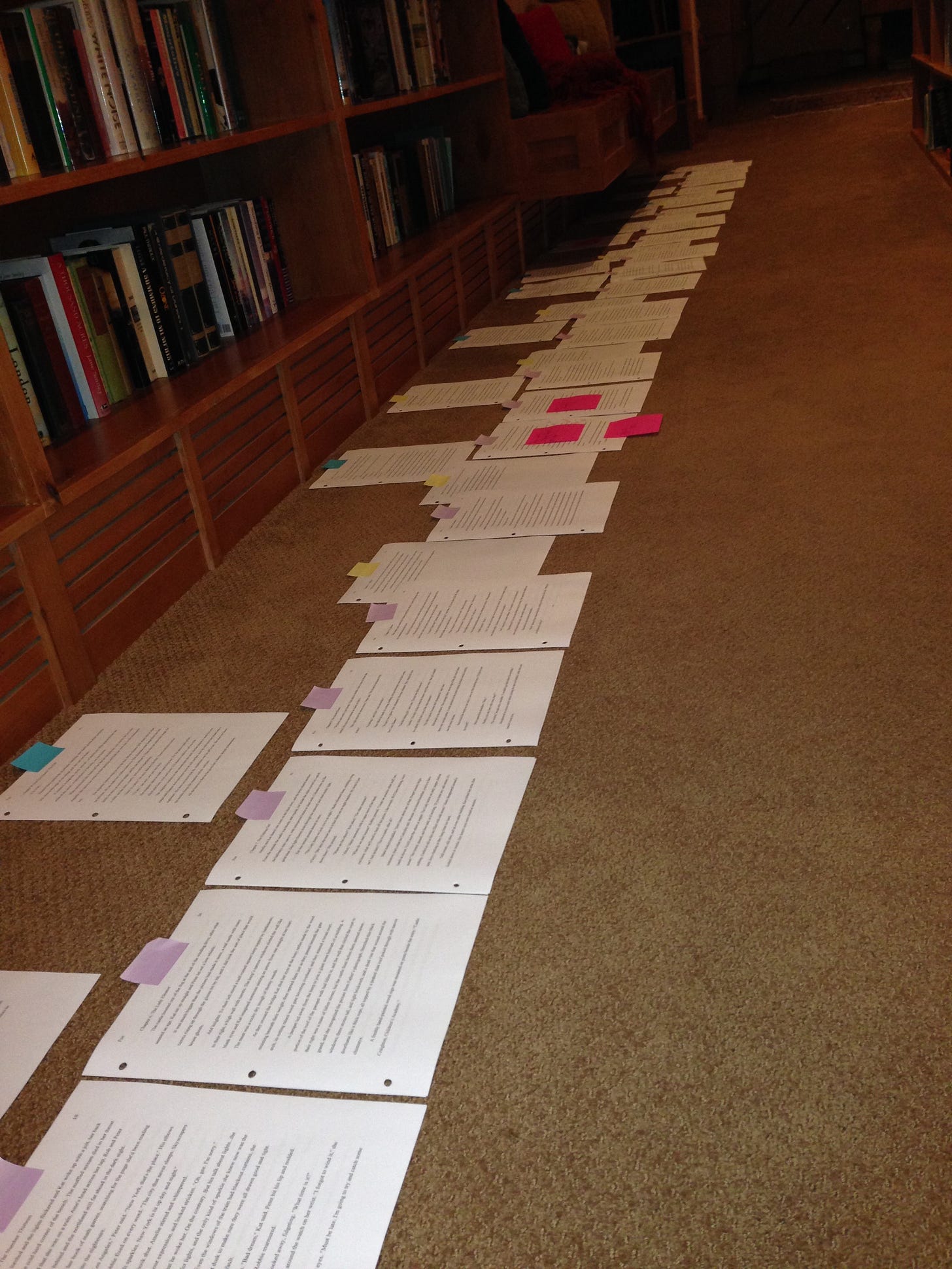Revision Hacks
From Bold to Bits
Last week I was helping a writer with revision, and I mentioned that I have a list or two of hacks, from the big global things, to the smaller things. It occurred to me to share it here, too.
Now, I love revision. My first drafts tend to be real ugly ducklings. If there’s a swan inside, it only emerges after multiple revisions.
But near to the end, I think it helps to make dedicated passes for things both large and small, so let’s go from the macro to the micro, from a ten-point global revision technique to a detailed checklist.
The Global Passes
Reread the entire manuscript in one sitting, making margin notes. I suggest no stopping to make typed corrections, and I suggest reading out loud. And actually, instead of sitting, I suggest walking. Better for you and it keeps you focused.
Make note of world details (i.e., character eye color, dates, place names) and confirm consistency.
Confirm that tone, POV, and voice are working, especially if you have written in multiple points of view. I often separate out each POV and read again separately from one another.
Identify large-scale plot weaknesses. Use Martha Alderson, aka, The Plot Whisperer or James Scott Bell’s Write Your Novel From the Middle to locate (in general) plot turning points and confirm that tension is increasing appropriately.
Make a scene or chapter chart, as per Martha Alderson or Darcy Pattison (Novel Metamorphosis).
Try Pattison’s “shrunken manuscript” technique. This allows you to check for large gaps or holes. I once discovered that a love interest had disappeared from the story for many pages using this technique - I only had to inject a couple of new scenes to make that correction.
Identify your characters’ arcs. Make sure you have a “story-worthy problem” (the true internal desire your character must resolve), a solid external problem, and a resonant theme.
Use Cheryl Klein’s plot checklist worksheet to further clarify theme and emotional arcs.
Rewrite/retype the entire manuscript from a hard copy. I do this several times for each story I write. It’s a pain, but effective for deep editing.
Do exercises as needed that are found in Donald Maass’s Writing the Breakout Novel Workbook.
The Smaller Issues (That Make a Big Difference)
Find all the “ly” words (i.e., adverbs) by using the Word search feature and eliminating most
Search for “it is/was” and “there is/was”. It’s almost always stronger to use different phrasing. (Or…Phrases are almost always stronger without “it’s”.)
Search for places where your character “felt,” “thought,” “saw,” “looked,” “noticed,” “remembered,” etc. When you’re really inside your character, those phrases aren’t necessary
Search for sentence “flow.” In particular, I look sentence by sentence for stronger first and last words, the two most important words in any sentence
Search for passive voice and other indicators of “telling”, like long narrative passages describing a scene
Try to make sure there’s tension on every page
Remove dialogue tags wherever possible. Even “said” can get in the way when only two people are talking
Make sure gesture substitutes for internal thoughts wherever possible
Look for those things that pop up in your subconscious and may be amplified – recurring metaphors or images that you can weave through the manuscript
Watch for repetition
“Voice” – either jargon, dialect, or manner of speaking as appropriate
Remove “just” “so” or other personal hiccups
Remove linking verbs - they are almost always an indication of passive voice.
Remove “then,” and “when”
Add physical gestures/personal tics for characters
Check that all five senses are in most scenes, and used as scene builders
I hope these lists come in handy. If you have any revision checklist ideas to add, please do!




What a fantastic checklist, thank you! ☺️
That initial re-reading step feels like opening a present. Though not necessarily the thing I wanted or expected, it eventually becomes wonderful. Thanks for sharing your expert advice, Janet!